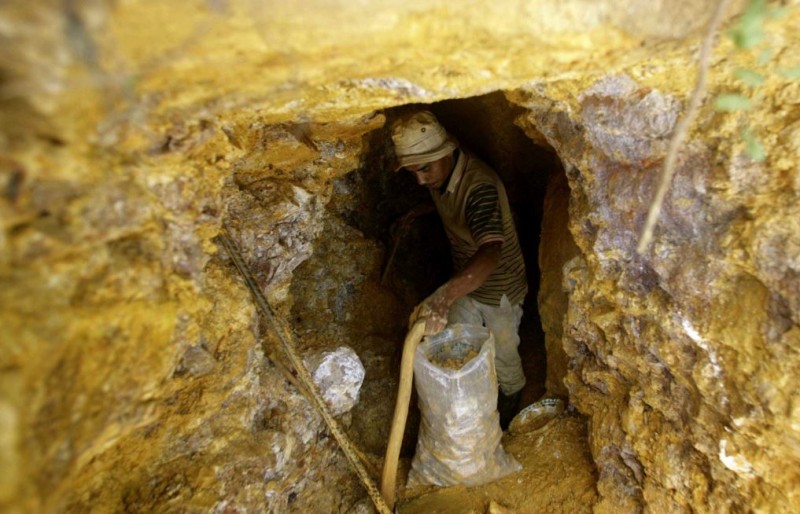
Gold holds a special place in human history, being revered for its beauty and value. But have you ever wondered how gold is extracted from the earth? In this article, we will take you on a journey through the fascinating process of extracting gold from the depths of the earth. So, let's delve into the world of gold mining and uncover the secrets behind this precious metal.
Introduction
Gold is a precious metal that has captivated humans for thousands of years. Its rarity, malleability, and resistance to corrosion make it highly valuable in various industries and as a form of currency. However, gold doesn't magically appear; it is formed deep within the earth's crust through a complex geological process. The extraction of gold involves several stages, from prospecting and exploration to refining and purification. Let's explore each step in detail.
Formation of Gold Deposits
To understand how gold is extracted, we must first understand how gold deposits are formed. Gold is often found in association with quartz veins, hydrothermal deposits, and placer deposits. These deposits are the result of geological processes that occurred over millions of years. Heat, pressure, and the movement of fluids in the earth's crust play crucial roles in the formation of gold deposits.
Prospecting and Exploration
Before mining can begin, gold deposits need to be identified and assessed. This is done through prospecting and exploration. Geologists use various techniques to locate potential gold deposits, such as studying rock formations, conducting geological surveys, and collecting samples. These initial steps help determine the viability of a gold deposit and guide further exploration activities.
Mining Methods
Once a promising gold deposit is identified, the next step is mining. There are different methods of mining used to extract gold, depending on the location and characteristics of the deposit. The two primary methods are open-pit mining and underground mining. Open-pit mining involves excavating large open pits to extract ore, while underground mining involves tunneling into the earth to access gold-bearing rocks.
Extracting Gold from Ore
After the ore is mined, it goes through a series of processes to extract the gold. The first step is crushing and grinding the ore into smaller pieces. This increases the surface area of the ore, allowing for better extraction of gold particles. Chemical processes such as leaching and smelting are then employed to separate the gold from the crushed ore. Leaching involves using chemicals to dissolve the gold, while smelting involves high temperatures to extract the gold from the ore.
Refining and Purification
Once the gold is extracted from the ore, it is not yet in its purest form. It usually contains impurities that need to be removed. Refining and purification processes are employed to achieve this. Common methods include electrolysis, which uses electricity to separate gold from other elements, and aqua regia, a mixture of acids that dissolves impurities. These processes result in high-purity gold ready for commercial use.
Environmental Impact
While gold mining is undoubtedly profitable, it also has environmental consequences. The use of heavy machinery, deforestation, and the release of harmful chemicals during the extraction process can have a significant impact on ecosystems and local communities. To mitigate these effects, mining companies implement various measures, such as reforestation, water treatment, and responsible waste management.
Gold Recycling
Given the finite nature of gold resources and the environmental impact of mining, recycling gold is becoming increasingly important. Gold recycling involves the collection and processing of old gold jewelry, electronic waste, and other sources of discarded gold. Through refining processes, recycled gold can be transformed into high-quality bullion, reducing the need for new mining and minimizing environmental disruption.
Global Gold Production
Gold is produced in various countries around the world, with some nations having significant reserves and production capabilities. Major gold-producing countries include China, Australia, Russia, the United States, and Canada. The total global gold production varies from year to year due to factors like mining investments, political stability, and market demand.
Uses of Gold
Gold's unique properties make it highly sought after in various industries. It is used in jewelry, electronics, dentistry, aerospace technology, and many other applications. Gold's historical role as a store of value has also made it an attractive investment and a hedge against inflation. Its scarcity and enduring appeal contribute to its status as a symbol of wealth and prosperity.
Conclusion
Gold extraction from the earth is a complex process involving geological exploration, mining operations, and refining techniques. From the formation of gold deposits to the final purification, each step contributes to the journey of this precious metal. While gold mining has significant environmental and social implications, responsible practices and recycling initiatives are vital for a sustainable future.
Petroleum Minister Hardeep Puri made a big statement about the prices of petrol and diesel
Ambitious Plans by e-Sprinto to Sell 10,000 Eco-Friendly Electric Wheelers
Plan launched by the US and UK to exclude Russia from the nuclear energy market